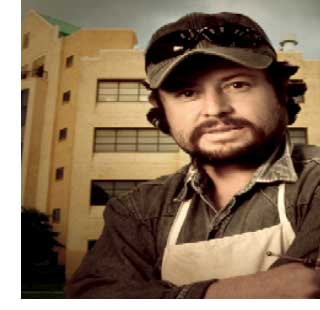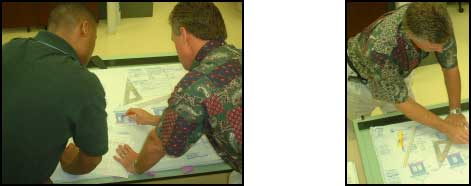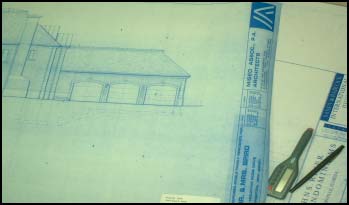
|

 |
 Cast Stone is a highly refined architectural precast concrete building stone manufactured to simulate natural cut stone. One of the oldest known types of concrete, it is the most aesthetically refined form of concrete known today. Cast stone is used as a masonry product to provide architectural trim, ornamentation of functional features on buildings and other structures.
Cast Stone is a highly refined architectural precast concrete building stone manufactured to simulate natural cut stone. One of the oldest known types of concrete, it is the most aesthetically refined form of concrete known today. Cast stone is used as a masonry product to provide architectural trim, ornamentation of functional features on buildings and other structures.
The earliest known use of Cast Stone was in the year 1138. The product was first used extensively in London in the year 1900 and in America around 1920.
Since the early 1920ís, Cast Stone has earned widespread acceptance in the architectural community as a suitable replacement for many masonry materials and for all types of natural cut building stone.
The manufacture of Cast Stone is generally regarded as the most labor-intensive of all cementitious product manufacturing processes. Of paramount importance to any Cast Stone manufacturer is the competence of the design department. To assure the success of the project, the detailer assigned to a Cast Stone job must have both knowledge and experience of architectural styles and designs, as well as the manufacturing methods, and setting techniques employed by the masonry contractor.
Since most other building products are either more "standardized" in nature (e.g. Brick or window units) or less visible (e.g. Structural steel), Cast Stone usually becomes the custom element of the building facade that makes other materials fit together. The manufacturer details each piece with an aim toward simplification and standardization. Not only is each stone an architectural feature in itself but so is every mortar joint.
The pattern or tooling shop is the heart of any Cast Stone producerís enterprise. This is because of the extraordinary degree of craftsmanship required. The most successful producers have been in the business for many, many years and are usually able to cultivate talent which is passed down from generation to generation.
Patterns for Cast Stone can be made from almost any material. The most common materials are wood, plaster, fiberglass and rubber. Other materials used are clay, gelatin, gypsum, Styrofoam, plastic, concrete, and one of the earliest casting mediums, sand. Many advances have been made in rubber which have provided some very durable polyurethanes and polysulfides which are suitable for not only casting final products, but for obtaining impressions of existing and historical work as well.
|

|
The journeyman pattern maker knows which material to select for a given application and exactly how to use it. Model maker, artist, sculptor, plasterer, master carpenter, and leader of men; the modern Cast Stone plantís pattern shop foreman must be all.
The two most widely used casting methods in use today are the "Vibrant Dry Tamp" (VDT) system and the "Wet Cast" method. Each method requires a meticulously proportioned mix design consisting of carefully graded and washed natural gravel and sands combined with crushed graded stone such as granite, marble, quartz or limestone meeting the latest requirements of ASTM C 33. The mixtures are proportioned for maximum density and to produce the required "fine grained texture similar to natural stone with no bug-holes permitted." White portland cement (ASTM C 150) is usually used to achieve lighter colors and color consistency. Blending of grey Portland cement and coloring pigments (ASTM C 150) together with the white cement in order to achieve color is a fairly common practice.
Since a rich cement/aggregate ratio of 1:3 is normally used; a properly (warm-moist) cured Cast Stone unit will have a somewhat higher compressive strength (up to 6000-psi) and a lower cold water absorption rate (6%) than natural limestone or normal concrete. The VDT method, due to its inherently lower water/cement ratio typically yields higher compressive strengths than low-slump concrete. Some producers are reporting compressive strength as high as 10,000 psi.
The VDT production system entails the vibratory ramming of earth-moist; zero-slump concrete against rigid form work until it is densely compacted and ready for immediate removal from the form. This process enables as many as 100 pieces to be cast in an eight-hour day and is ideally suited to fast-track construction projects due to its production capability and low form work requirements. The VDT process guarantees total absence of bug-holes and a finish that is difficult to distinguish from natural stone. The limitation of the process is that it generally requires one flat, unexposed side to the design as "L" shapes and similar shapes are more costly to produce.
The final procedure in the manufacture of Cast Stone is the removal of the cement skin from the outer surface. This exposes the fine aggregates, which make up the matrix. The removal of the cement skin assures that the product will undergo minimal color and texture changes as a result of weathering. Muriatic (hydrochloric) acid etching is the most popular method of finishing Cast Stone, because of the brilliance of the etched aggregates and the ability of the resulting finished surface to remain clean.
Sandblast or chemical retardation finishing methods (normally used in finishing of architectural precast concrete panels) is seldom used with Cast Stone because of the dulling of aggregates and the loss of fine detail, which are not acceptable in quality Cast Stonework.
Cost per unit depends greatly on specifications and bid documents. On an average, however, Cast Stone costs less than quarried stone. There are several reasons. One is that it is a man made product and requires no further tooling after the initial pattern is made. Each piece of cut stone must be carved individually. Another reason is freight. Usually quarried stone must be hauled over long distances. Most of the limestone in this country is hauled from Indiana. Many stones come from overseas. Brownstone is now typically available from one main source, Germany. The brownstone from Germany is beautiful but the cost is a multiplier. Not 10 or 20% more, but many times more.
|

|
Cast Stone is a highly versatile architectural precast building material which looks like, is usually stronger than, weathers better, has greater color consistency, can be reinforced, and costs less than cut stone.
This specification encompasses basic requirements for Cast Stone; a building stone manufactured from a mixture of Portland Cement and coarse and fine aggregates, to simulate natural stone. Cast Stone is generally used as a masonry product, as an architectural feature, ornament, or facing for buildings or other structures.
Materials and processes used for manufacturing Cast Stone widely according to the aggregates locally available to the manufacturers and the processes and techniques used by the manufacturers to obtain the desired finish and physical properties. Of paramount importance in producing Cast Stone is the need to employ a properly proportioned mixture of white and/or grey cements, manufactured or natural sands, carefully selected crusher stone or well graded natural gravel and mineral coloring pigments to achieve the desired appearance while maintaining durable physical properties.
Although a variety of casting methods are used, production conforming to this standard will exceed minimum requirements for compressive strength and weathering qualities essential for normal installations as a suitable replacement for natural cut limestone, brownstone, sandstone, bluestone, granite, slate, keystone, travertine and other natural building stones.
It is hoped that these specifications may be helpful to the specifiers in understanding the inherent qualities of Cast Stone and its use. For details and samples of finishes available for your project, contact a Stone Legends Sales Representative.
|
 Back to Top Back to Top
|



Cast Stone is a highly refined architectural precast concrete building stone manufactured to simulate natural cut stone. One of the oldest known types of concrete, it is the most aesthetically refined form of concrete known today. Cast stone is used as a masonry product to provide architectural trim, ornamentation of functional features on buildings and other structures.
Back to Top

